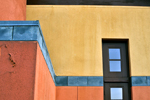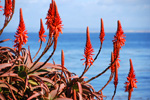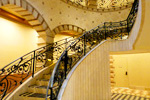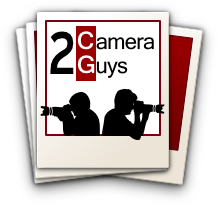Best Superzoom Cameras under $500
SECOND PLACE
Canon Powershot SX40 HS
Canon Powershot SX40 HS
We put the Canon SX40 HS in second place, but it might be your first place camera IF you (a) shoot stationary objects from a long distance, (b) use a tripod, (c) are not concerned about its smaller viewfinder, and (d) don't need or want RAW files in addition to JPEGS. If this sounds like you, take a close look at the Canon SX40; it is hot for your particular type of photography.
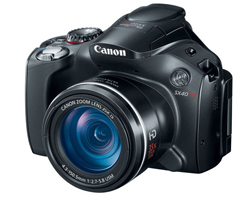 |
What's HOT about the SX40HS:
1. 35x zoom range and an 840mm (equiv) telephoto reach. On paper this is the longest telephoto zoom on the market, longer than even the Nikon P500's 36x lens, which in theory maximizes at 810mm. (In actuality, the P500 gets slightly closer to the target, but they are both very long zooms).
2. Sharpest and most detail images at maximum telephoto zoom when the camera is used on a tripod.
3. In addition to the optical 35x zoom, it has an additional digital zoom that takes it to 140x magnification. This is a convenience feature, as you can achieve the same thing by shooting at 35x optical zoom, then cropping and using the relevant portion of the image file.
3. Excellent wide angle coverage. At 24mm, it is slightly wider than the FZ150 (25mm), and notably wider than the HX100V (27mm). Only the Nikon P500 beats it with 22.5mm, but the P500 fails in other aspects.
4. Though the LCD screen is smaller and lower in resolution than the competition, it is fully articulating (flips out to the side and twists around) like the screen on the FZ150, whereas the Nikon and Sony screens are more limited in movement.
5. Viewfinder clears quickly for next shot.
6. Shoots 1080p/24 HD movies, low res (320x240) movies at 240 fps, or VGA (640x480) movies at 120fps. (None of the others shoot 1080p/24 format, but the Nikon P500 shoots 1080p/30, and the Panasonic FZ150 and Sony HX100V shoot up to 1080p/60).
7. Built-in hot shoe for external flash (the Panny FZ150 has one also, the Nikon and Sony models don't)
What's NOT so hot about the Canon SX40 HS:
1. Poor viewfinder--smallest and dimmest of the bunch. Relatively hard to see through.
2. Small, 2.7" diagonal low resolution screen, 230,000 dots. The other three models all have 3" diagonal screens which much higher resolution.
3. Vignetting and softness on the corners at maximum zoom
4. Frequent soft or fuzzy exposures in low light
5. No panorama mode (the FZ150 and HX100V have this--gimmicky, but people like it).
6. No RAW (in this group, only the Panny FZ150 records RAW)
7. No input for external mic (which you need if you don't want zoom motor noise in your audio track)
8. No GPS (the Sony has it)
9. No 3D mode (the Panny and Sony have 3D modes)
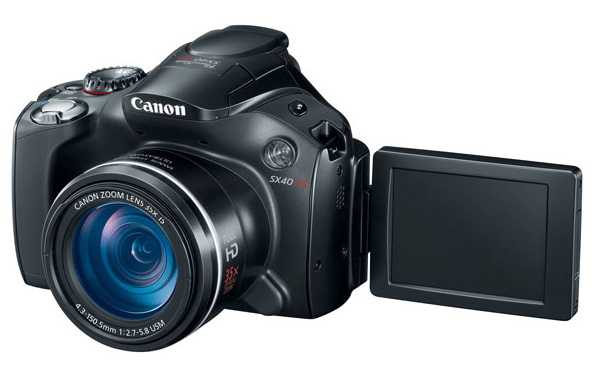
A Look at the Canon SX40 HS
Zoom Power. Let's be clear about one thing: When placed on a tripod and zoomed out to maximum telephoto, the Canon SX40 HS will beat all other cameras in this shootout in terms of detail and sharpness of the photos. At maximum zoom you can get closer to the subject with the best image detail, but only if you use a tripod and the subject is not moving. If the subject is moving it is difficult to position the subject in the viewfinder, and once you go to hand held operation, all bets are off. The Panasonic FZ150's image stabilization at 24x zoom is superior to the SX40's at 35x zoom, and you more frequently end up with clearer sharper images on the FZ150 when the cameras are hand held.
At maximum zoom on the SX40, pictures tend not to be quite as pristine as those you get from the FZ150, for they often show vignetting on the corners, and on our sample the left side of the frame had softened focus and reduced contrast compared to the middle of the frame. Vignetting can be corrected in a photo editor, but the softness cannot. On the other hand, you won't notice the softness toward the outer parts of the image unless it has a lot of detail and you blow it up for large prints or large scale presentation with a high definition 1080p projector. For normal Facebook sized snapshots, the softness is invisible and a non-issue.
But, you may say, the Sony HX100V has a long telephoto reach like the SX40, and it is 16 megapixels, while the SX40 is only 12 MP. Doesn't that give the HX100V an edge? NO. This photo of a mountain peak about five miles away, taken with both cameras on tripods, has been cropped to show the image detail in native resolution:
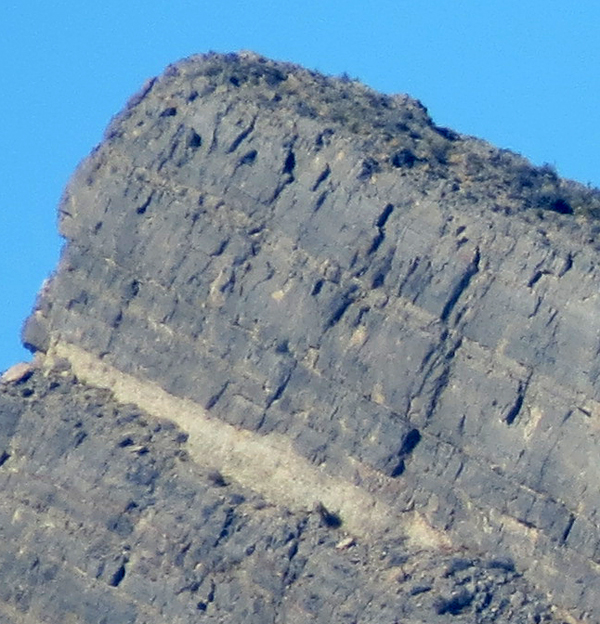
Turtlehead Peak, Canon SX40,
tripod mounted, cropped detail, full 12 MP resolution
As you can see, the higher 16 MP resolution of the HX100V buys you nothing in image detail. To the contrary it is notably worse:
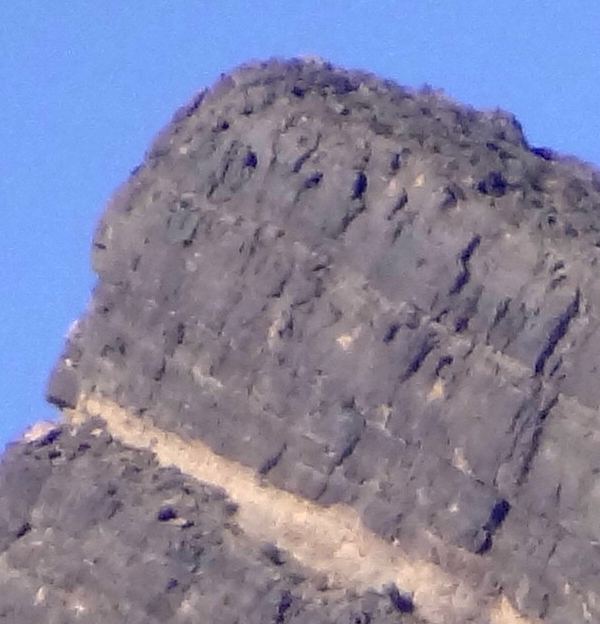 Turtlehead Peak, Sony HX100V,
Turtlehead Peak, Sony HX100V,tripod mounted, cropped detail, full 16 MP resolution
For a closer look at how the Canon SX40 and Sony HX100V look at 100% pixel viewing, see them side by side in PhotoScope:
An important question: How big will your photos be? If you are not blowing the images up for large prints or presentation on a large screen high resolution projector, then the difference in sharpness won't make much difference to you. The following two pictures were taken with the SX40 and the HX100V both tripod mounted. At maximum optical zoom, the SX40 gets slightly closer to the subject, but not much. When these full-frame pictures are compressed to this size (600 pixels wide), you can still see a slight advantage in sharpness on the SX40, but it would be difficult to notice unless shown side by side:
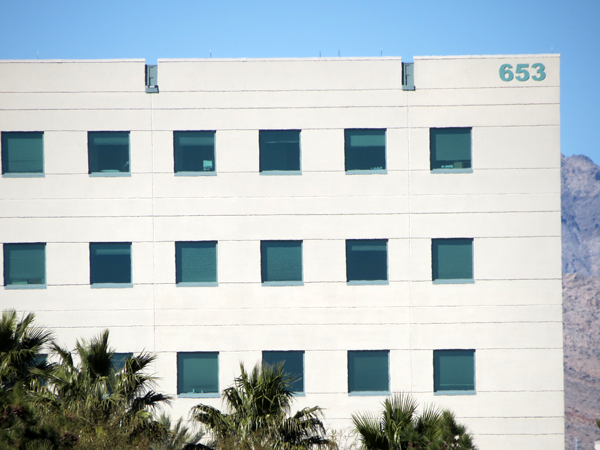
Canon SX40, Hospital, full frame image
tripod mounted, maximum zoom
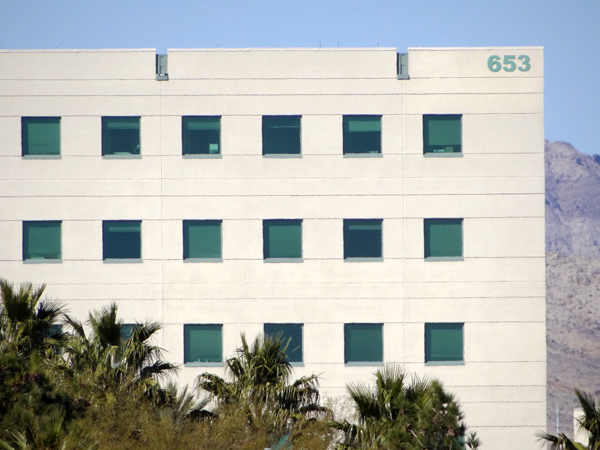
Sony HX100V, Hospital, full frame image
tripod mounted, maximum zoom
However, if they are shown in larger format, the difference in sharpness becomes more obvious. The following two images of window detail from the Hospital photos above are cropped showing the full resolution of what the cameras captured:
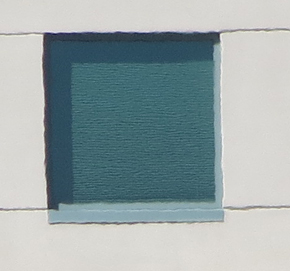
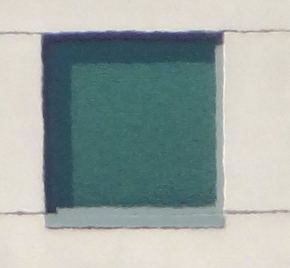
Canon SX40 HS Sony HX100V
The SX40's Wide Angle Performance. In addition to the long zoom range on the telephoto end, the Canon SX40 has excellent range at the wide angle end (just slightly wider than the Panasonic FZ150). One of the optical properties of wide angle lenses is converging verticals:

Del Dotto Winery Tasting Room
Canon SX40, with lens at 24mm wide angle setting
Converging vertical lines can often be used for dramatic effect as in the photo above. But if you don't like them, they are easy to correct in a program like Photoshop Elements:

Del Dotto Winery Tasting Room
Same photo as above, converging verticals corrected in Elements
Image Detail.The SX40 delivers good detail in the center of the lens, but it softens toward the edges. Here is a small section of the photo above in native resolution:

Detail of Del Dotto Tasting Room,
showing fine detail and sharpness at native resolution.
Vignetting on the Canon SX40. Vignetting is the darkening of the corners and edges of a photograph due to optically imprecise illumination of the sensor. This flaw shows up on the SX40 when the lens is used at or near the telephoto end of the optical zoom range, but it does not appear in mid-zoom range or wide angle shots. It can be corrected in a photo editor, but who wants to?
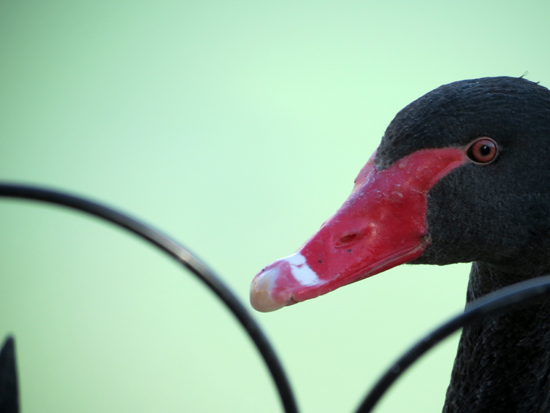
Canon SX40 at max telephoto zoom. The picture is brighter in the middle
and darker toward the edges. The Panasonic FZ150 does not have this flaw.
Image Sharpness in Low Light. In numerous instances when shooting indoors or in lower light we were able to get sharper images on the Panasonic FZ150 and Sony HX100V than on the SX40. The following two photos were taken in sequence, one on the SX40 and one on the FZ150, in an indoor setting where ambient light was moderate. They have been contrast-enhanced to make the difference in sharpness more obvious, but they are otherwise unretouched:
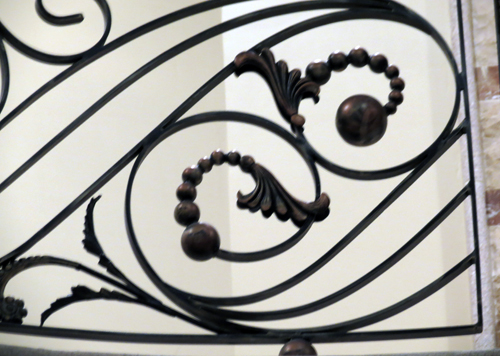
Railing Detail, Canon SX40 HS
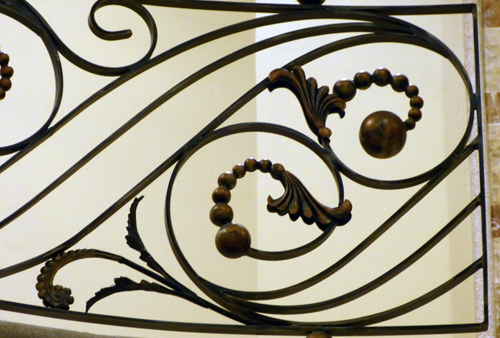
Railing Detail, Panasonic FZ150
The SX40's Viewfinder Problem. A big, bright viewfinder is a vital aid to composition. You take better pictures when you can see them in a black frame with the sunlight blocked out. A camera's viewfinder can and should be used as a scope to find the pictures you want. So having a large, bright viewfinder is a key to a camera's usability.
The Canon SX40 has the smallest and dimmest viewfinder of any of the four models in this shootout. This makes the camera more difficult to use as a scope when you're hunting for those great photos. We aren't saying you can't take a great picture with the SX40--obviously you can. But it requires more visual and mental concentration to use the SX40 than it does the Panasonic FZ150 or the Sony HX100V.
Since the viewfinder is small, you may want to use the LCD screen instead. But the SX40's LCD screen is smaller and lower in resolution than the screens on the other three models also. No matter what you do it is simply more difficult to use this camera as a sighting tool to scope out those great photographs. Again, it can be done. But if you are used to shooting an FZ150 and you pick up the SX40 for a test drive, you will find it a frustrating experience.
But in the end, max zoom on a tripod can be a gold mine... The Canon SX40 HS stands alone in the group as the one to use with a tripod for far away stationary objects. Here is the last full moon shot from my back patio:
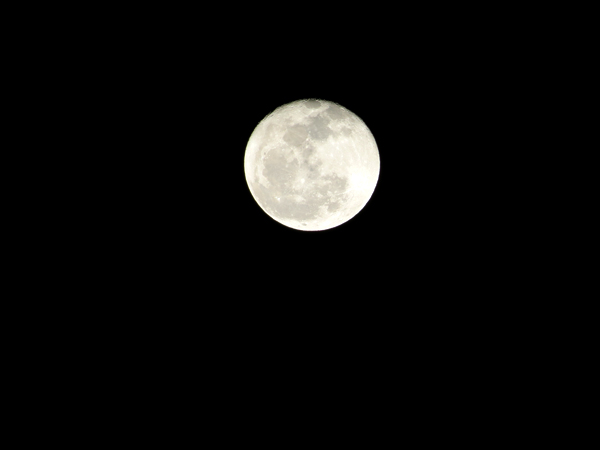
full frame image compressed to 600 pixels wide
Now let's take a closer look at the actual detail captured by the SX40:
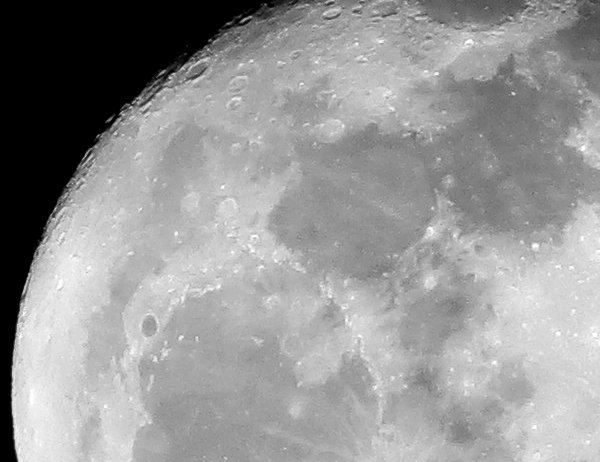
Canon SX40 HS, tripod mounted, 35x optical zoom,
cropped detail at native 12 MP resolution
Conclusion. The Canon SX40 HS has a very long zoom range that works beautifully if and only if the camera is mounted on a tripod. Though the lens has some vignetting and edge softness, it is overall superior in sharpness (particularly at the maximum telephoto end) to the Nikon P500 and the Sony HX100V, which are the other models that rival its telephoto reach.
A frustrating limitation of the SX40 is the substandard viewfinder and its smaller, low res LCD screen. After experiencing the Panasonic FZ150 and the Sony HX100V, the SX40 by comparison is more difficult to work with as far as sighting and composing is concerned. The FZ150 and HX100V also tend to be more reliably sharp in lower light situations. Nevertheless, if you photograph subjects from a long distance and want maximum magnification, if those subjects don't move much (giving you time to compose the picture), and if you use a tripod, the Canon SX40 HS will give you the sharpest and most detailed images of those far-away subjects of any camera in this shootout.


